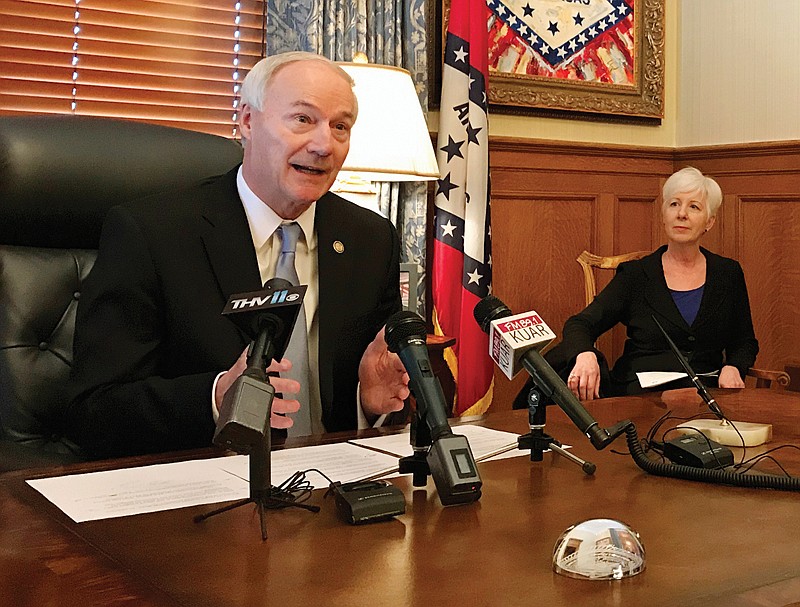Arkansas Governor Asa Hutchinson sent a letter to presidents and chancellors of the state's four-year universities Tuesday stating he will seek a $10 million increase in higher education funding during the 2018 fiscal session.
The funds will be distributed to support the new productivity funding model recently passed during the general assembly. Previously, the state-based funding for two- and four-year universities was based on attendance. Now the schools will be funded based on their completion rates, which is determined by how many students graduate or complete a certificate.
Steve Cole, chancellor of the University of Arkansas at Cossatot, said he fully supports the productivity funding model and that the old way never properly funded schools.
"This has been in the works a long time," Cole said. "When it finally came down, we fully supported a productivity model. Obviously no model is going to be perfect.
We all know that. Eventually some things will need to be tweaked."
He said they would not change their curriculum or do anything different to address the new funding model as they have had one of the highest graduation rates in the state for the past three years.
"A lot of the things we're already doing in the classroom, it actually has made it to where we are going to be one of several colleges to receive productivity funding," Cole said. UA-Cossatot is expected to receive an additional $323,000 in funding in 2018. That is their portion of the $10 million they will share with Arkansas' 22 other two-year colleges.
"We're really proud to get that," he said. Cole attruted the school's graduation rate to its faculty.
"They are energetic and involved with students from day one,"
he said. "They are also assigned advisers to students.That's one big thing."
The school also put in the Educational Resource Center which offers students tutoring and help with their classes.
"You take those two things and everyone pulling in the same direction, it gives us a high retention rate and students progress quickly," he said. "It makes a difference.
I'm proud of the students getting in and graduating quickly."
Hutchinson's letter also encouraged schools to not increase tuition and for two-year colleges to keep any increases consistent with the consumer price index or below to maintain educational affordability.
"Controlling costs for students sends a strong message to students, taxpayers and legislators that we are serious about making a college education obtainable for everyone and that our institutions of higher education can be trusted with their investment," the letter states.
UA-Cossatot, which has 1,500 students, has a tuition rate of $70 per credit hour. The University of Arkansas at Hope and Texarkana's population rate is about the same, with a tuition rate of $74 per credit hour. UA Hope-Texarkana Chancellor Chris Thomason said they have one of the lowest tuition rates in the state despite a slight raise last year after several years without increases. He said they will receive $63,000 from the state for their high graduation rate and does not making any changes.
"It is in line with the commitment this campus has had for a number of years," he said. "While we continue to strive to ensure we are very efficient in recruiting traditional and nontraditional students to start here I have always said as much as we'd really like you to begin your college journey and begin it here, we'd really like you to finish."
For the first year, schools have a hold-harmless agreement, where those without high completion rates aren't penalized for their numbers. After the transition period, they will begin to lose funding. He added that he believed the schools with high completion rates also may not be able to maintain that status through the years.
"It will bring unique challenges for some campuses," Cole said. "Chances are good they all will see a decline in production in some way. It's hard to improve forever. I hope we can, but it will ebb and flow."

